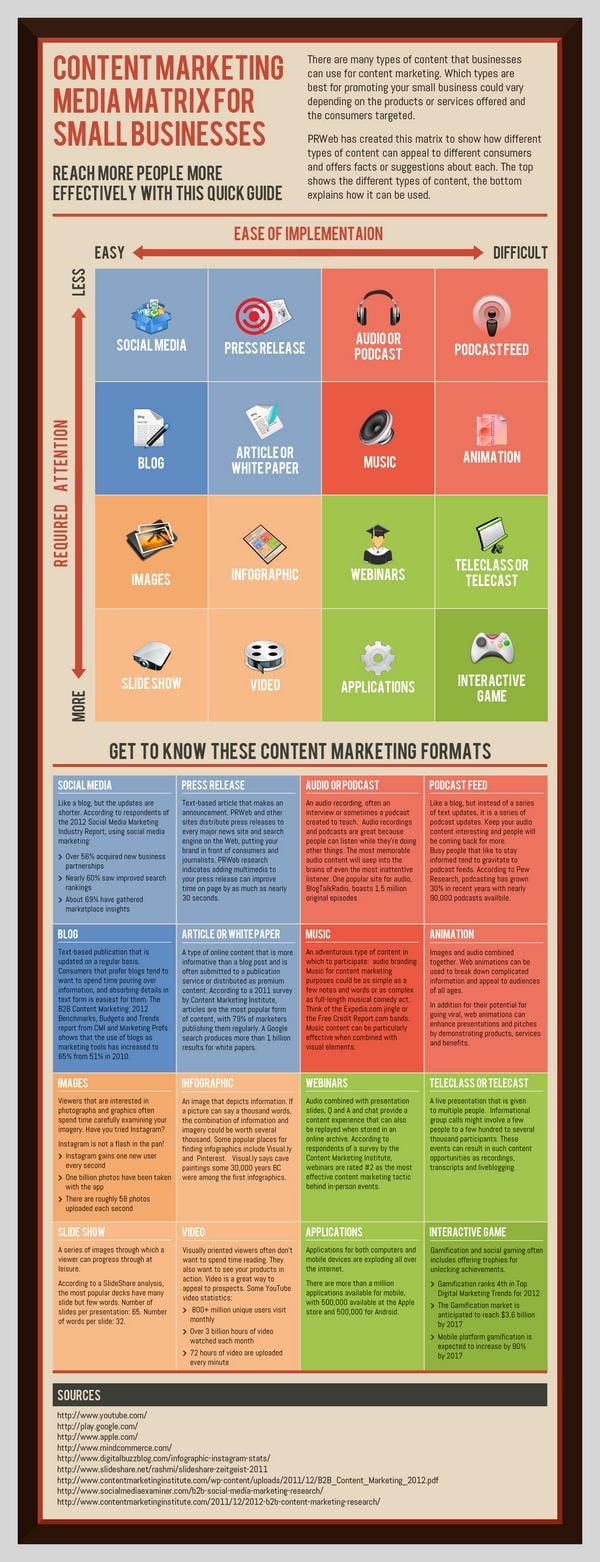3 Financial Strategies for a More Scalable Construction Business
 As 2017 dawns, the outlook for the construction industry is optimistic. Despite setbacks experienced during the Great Recession, the industry is set to add 790,400 jobs over the decade of 2014 to 2024, accounting for the majority of new jobs in the goods-producing sector. Real output will grow 2.8 percent annually during this period. In 2017, total U.S. construction starts will increase 5 percent, reaching $713 billion, anticipates Dodge Data & Analytics.
As 2017 dawns, the outlook for the construction industry is optimistic. Despite setbacks experienced during the Great Recession, the industry is set to add 790,400 jobs over the decade of 2014 to 2024, accounting for the majority of new jobs in the goods-producing sector. Real output will grow 2.8 percent annually during this period. In 2017, total U.S. construction starts will increase 5 percent, reaching $713 billion, anticipates Dodge Data & Analytics.
For contractors, this is great news, but it also presents the challenge of scaling up to meet growing demand. Scaling up requires not only hiring more workers and buying more material, but also adjusting your financial strategy to cover your increased overhead expenses without hurting your cash flow and profits. Here are three financial strategies for successfully scaling up in 2017.
Scale up Revenue while Scaling Down Costs and Expenses
A scalable remodeling business model is designed to allow you to increase revenue while holding both job costs and overhead expenses down. To be scalable, your financial plan should aim for gross profit margins of 40 percent or more (minimum of a 1.67 markup).
 To achieve this level of gross profit margin, one fundamental strategy is increasing your revenue. The key to increasing your revenue is improving your marketing and sales. One of the most efficient ways to improve your marketing is by improving your positioning through a better unique selling proposition (USP): a brief statement that summarizes what you offer customers that your competition doesn’t.
To achieve this level of gross profit margin, one fundamental strategy is increasing your revenue. The key to increasing your revenue is improving your marketing and sales. One of the most efficient ways to improve your marketing is by improving your positioning through a better unique selling proposition (USP): a brief statement that summarizes what you offer customers that your competition doesn’t.
To refine your USP, narrow down your ideal target market. For instance, is there a certain neighborhood or a certain type of building that would be more profitable to specialize in? Research what your target market is most seeking in a construction contractor. For example, are they price shoppers or are quality or service bigger priorities for them? Craft your USP to emphasize what your target market most values and make sure all your marketing material reflects your new USP.
Along with increasing your revenue, the other half of keeping a high profit margin is keeping expenses low. Many construction businesses fail because they can’t cover the cost of overhead. Finding ways to reduce the money you must pay for running your business is key to minimizing your expenses. Taking the time to research different organizational charts, industry best practices, project management methods, business management software and employee compensation strategies based on performance. Investing in these areas now can help your business reduce overhead through efficiency of operations as well as economy of scale as the business grows.
Maintain Efficiency through Automation
 Another effective strategy to lower job costs is automation. Automation can help you lower the costs of materials by helping you plan more precisely to avoid unnecessary waste. J.E. Dunn has partnered with Autodesk and Microsoft to develop Lens, a cloud-based software tool that combines 3-D virtual modeling with instantly-calculated cost estimates for each component of your building project.
Another effective strategy to lower job costs is automation. Automation can help you lower the costs of materials by helping you plan more precisely to avoid unnecessary waste. J.E. Dunn has partnered with Autodesk and Microsoft to develop Lens, a cloud-based software tool that combines 3-D virtual modeling with instantly-calculated cost estimates for each component of your building project.
Although not common yet in residential remodeling, another way automation can help cut materials costs and waste is by using 3-D printing. 3-D printing allows you to select from a wider range of cost-efficient materials, while speeding up the building process. Last year, Chinese company Huashang Tengda was able to assemble a 3-D-printed house in just 45 days. Remember, many said nail guns would never catch on!
Keep Costs and Expenses Down with Outsourcing
 Outsourcing is another proven way to cut labor costs both in the field as well as the office. Many successful large companies outside our industry have used outsourcing effectively to streamline their labor expenses. For instance, Google relies heavily on revenue from pay-per-click advertisers who pay to have their results featured in search engine rankings. Maintaining its advertising revenue requires a large sales support team, which Google has outsourced. Amway is another company that outsources its sales, relying on a distributor model to promote direct sales. In our industry many contractors already outsource activities such as design, engineering, building permit procurement, sales, lead intake and prequalification, RRP demo, specialty trades and even general carpentry.
Outsourcing is another proven way to cut labor costs both in the field as well as the office. Many successful large companies outside our industry have used outsourcing effectively to streamline their labor expenses. For instance, Google relies heavily on revenue from pay-per-click advertisers who pay to have their results featured in search engine rankings. Maintaining its advertising revenue requires a large sales support team, which Google has outsourced. Amway is another company that outsources its sales, relying on a distributor model to promote direct sales. In our industry many contractors already outsource activities such as design, engineering, building permit procurement, sales, lead intake and prequalification, RRP demo, specialty trades and even general carpentry.
As these examples illustrate, you can outsource functions that are part of your core business if it is more efficient to delegate them to specialists than to maintain in-house talent. For instance, there is no need to pay for the expense of in-house 3-D drafting when you can easily outsource it. With the right plan and system you can also easily outsource routine peripheral functions such as bookkeeping and payroll.


 Remember back in 2006 before the great recession how much work there was for remodelers? Remember how busy you were and how easy it was to sell your services? And, back then, there was a good supply of experience workers and subcontractors. Then the recession came and things changed forever. Well, the remodeling economy has become healthy again and is predicted to get even better for the next year. According to one
Remember back in 2006 before the great recession how much work there was for remodelers? Remember how busy you were and how easy it was to sell your services? And, back then, there was a good supply of experience workers and subcontractors. Then the recession came and things changed forever. Well, the remodeling economy has become healthy again and is predicted to get even better for the next year. According to one  When demand for services picks up so does the market price for those services. If you have been selling on price and as a result haven’t been making enough money to live the lifestyle you desire, both today and when you eventually retire, now is the time to start charging more. And, in addition to raising your prices, be careful how much work you say yes to. The point here is to make sure you don’t pre-sell a whole bunch of work at your current margins. If you do you will prevent your business from being available to sell and complete work when demand and therefore job prices rise due to supply and demand. Although having a good backlog of work can be comforting, coming to realize you could be making a lot more money may lead to strong regrets. Also, keep in mind that material and subcontractor costs will also climb due to supply and demand. Make sure you estimate direct job costs based on when you will actually do the work, not what it would cost if you were doing it today.
When demand for services picks up so does the market price for those services. If you have been selling on price and as a result haven’t been making enough money to live the lifestyle you desire, both today and when you eventually retire, now is the time to start charging more. And, in addition to raising your prices, be careful how much work you say yes to. The point here is to make sure you don’t pre-sell a whole bunch of work at your current margins. If you do you will prevent your business from being available to sell and complete work when demand and therefore job prices rise due to supply and demand. Although having a good backlog of work can be comforting, coming to realize you could be making a lot more money may lead to strong regrets. Also, keep in mind that material and subcontractor costs will also climb due to supply and demand. Make sure you estimate direct job costs based on when you will actually do the work, not what it would cost if you were doing it today. The surge in spending will lead to a surge in job leads. This will afford remodelers the opportunity to be much more selective about who they will allow to become customers as well as what job types they will accept from those customers. Remember, the customers you serve will be sending you referrals. Those customers hang around with other people just like them. If you work for customers who beat you up on price and micromanage how you do business, their referrals will likely want to do the same. To avoid working for the wrong customers first
The surge in spending will lead to a surge in job leads. This will afford remodelers the opportunity to be much more selective about who they will allow to become customers as well as what job types they will accept from those customers. Remember, the customers you serve will be sending you referrals. Those customers hang around with other people just like them. If you work for customers who beat you up on price and micromanage how you do business, their referrals will likely want to do the same. To avoid working for the wrong customers first  Selling the work and selling it at high margins is one challenge. But in my option that’s a much easier challenge these days than trying to find and keep enough quality production staff and trade subcontractors to keep up with the work, and complete it with quality. Don’t wait until you already need the help to start looking for them. Instead, recruit good workers now and test them out to be sure they are right for your business and your business is right for them. During the winter months many employees are let go or laid off by contractors who lack good sales and marketing skills. This makes the winter a good time to look for prospective employees because there are more to choose from and because their options of available jobs are limited. Use the next few months to vet out the good ones and send the underperformers back out looking for jobs. Using this strategy it’s likely you will be able to produce the work you sell much easier while your competition has to do the best they can with the workers you passed up and or let go.
Selling the work and selling it at high margins is one challenge. But in my option that’s a much easier challenge these days than trying to find and keep enough quality production staff and trade subcontractors to keep up with the work, and complete it with quality. Don’t wait until you already need the help to start looking for them. Instead, recruit good workers now and test them out to be sure they are right for your business and your business is right for them. During the winter months many employees are let go or laid off by contractors who lack good sales and marketing skills. This makes the winter a good time to look for prospective employees because there are more to choose from and because their options of available jobs are limited. Use the next few months to vet out the good ones and send the underperformers back out looking for jobs. Using this strategy it’s likely you will be able to produce the work you sell much easier while your competition has to do the best they can with the workers you passed up and or let go.
 You will need to know this info to create a unique solution and to have confidence in what you suggest to them when discussing options. You will also need to know this information to avoid becoming a commodity contractor by just giving them a price on what they thought they needed. You know, just like pretty much every commodity contractor does every day.
You will need to know this info to create a unique solution and to have confidence in what you suggest to them when discussing options. You will also need to know this information to avoid becoming a commodity contractor by just giving them a price on what they thought they needed. You know, just like pretty much every commodity contractor does every day. You need to get their commitment to discuss how they will decide about important project details as well as which contractor they will ultimately partner with. If you don’t know how they plan to make these decisions how can you possibly help them make decisions and why should you be surprised when they don’t or can’t decide?
You need to get their commitment to discuss how they will decide about important project details as well as which contractor they will ultimately partner with. If you don’t know how they plan to make these decisions how can you possibly help them make decisions and why should you be surprised when they don’t or can’t decide?  If you have been getting business by providing free estimates for everyone who calls your business you are most likely wasting a lot of money making time. Are you really an expert in your industry if you have been letting those who buy from you tell you how to run your business? If these things have been happening to you it’s time to recognize the value of your time and expertise. It’s also time to limit offering them to only those who find value in what you offer, how you do so, and are willing to pay you well for your expertise. Here are three ways successful contractors reduce their lead flow, improve the quality of the leads they get, and sell more jobs at higher prices. Yes, it is true, read on!
If you have been getting business by providing free estimates for everyone who calls your business you are most likely wasting a lot of money making time. Are you really an expert in your industry if you have been letting those who buy from you tell you how to run your business? If these things have been happening to you it’s time to recognize the value of your time and expertise. It’s also time to limit offering them to only those who find value in what you offer, how you do so, and are willing to pay you well for your expertise. Here are three ways successful contractors reduce their lead flow, improve the quality of the leads they get, and sell more jobs at higher prices. Yes, it is true, read on! Because the information is presented in writing at your web site prospects won't be able to interrupt you as the typically do when you try to explain your process to them at live sales calls. If written well they will either recognize that your process works as a solution for them, or they will know why it’s not right for them. This can help you eliminate defending your process as you try to explain it to them live and in person. If they don't like your process after checking out your web site they won't waste your time.
Because the information is presented in writing at your web site prospects won't be able to interrupt you as the typically do when you try to explain your process to them at live sales calls. If written well they will either recognize that your process works as a solution for them, or they will know why it’s not right for them. This can help you eliminate defending your process as you try to explain it to them live and in person. If they don't like your process after checking out your web site they won't waste your time. Even if you are not ready to charge for them, before committing to preparing plans, specs and a proposal make an agreement with your prospect. Let them know that to prepare a proposal for them you require coming back to sit down with both of them to review, discuss and get a yes or no decision on your proposal and about working with your company. Remember, you will have more time to do this because by being more selective you will be creating fewer estimates and proposals. Those who won't meet with you probably aren't interested enough in working with you anyway. Perhaps they were just hoping for more free ideas from you before hiring the cheapest contractor or performing the work themselves. If they won't commit to meeting with you to review your proposal that's one less you have to do; freeing you up to concentrate on those prospects who respect you as a professional and value your process.
Even if you are not ready to charge for them, before committing to preparing plans, specs and a proposal make an agreement with your prospect. Let them know that to prepare a proposal for them you require coming back to sit down with both of them to review, discuss and get a yes or no decision on your proposal and about working with your company. Remember, you will have more time to do this because by being more selective you will be creating fewer estimates and proposals. Those who won't meet with you probably aren't interested enough in working with you anyway. Perhaps they were just hoping for more free ideas from you before hiring the cheapest contractor or performing the work themselves. If they won't commit to meeting with you to review your proposal that's one less you have to do; freeing you up to concentrate on those prospects who respect you as a professional and value your process. Most contractors can't explain how they do business, they just make things happen. In a smaller remodeling business, say up to about $5-700K of installed work, this may get you by. But as you grow your business, particularly if you want to
Most contractors can't explain how they do business, they just make things happen. In a smaller remodeling business, say up to about $5-700K of installed work, this may get you by. But as you grow your business, particularly if you want to  Be careful here. If you don't explain how you do business before winning the bid on an architect driven remodeling project you might just be told how you will do business. Examples include how and when you will be paid, what will be considered a change order vs. what you should have assumed to be included, what margin you can earn on change orders, and what hoops you will need to jump through before receiving progress payments and final payments. Be sure to carefully read any AIA Contracts before signing them.
Be careful here. If you don't explain how you do business before winning the bid on an architect driven remodeling project you might just be told how you will do business. Examples include how and when you will be paid, what will be considered a change order vs. what you should have assumed to be included, what margin you can earn on change orders, and what hoops you will need to jump through before receiving progress payments and final payments. Be sure to carefully read any AIA Contracts before signing them. If you are still running free estimates and playing a numbers game of leads to appointments to sales then I have something valuable to share. In the past I believed that if I did not actively pursue new clients, and provide free estimates, I would have no income. It was a numbers game; 5 leads - 3 appointments -1 sale. Sound familiar? In this article I share my lesson in letting go; finding the faith to trust a system to qualify prospects, and the positive impact it can make for your business as well as your cash flow.
If you are still running free estimates and playing a numbers game of leads to appointments to sales then I have something valuable to share. In the past I believed that if I did not actively pursue new clients, and provide free estimates, I would have no income. It was a numbers game; 5 leads - 3 appointments -1 sale. Sound familiar? In this article I share my lesson in letting go; finding the faith to trust a system to qualify prospects, and the positive impact it can make for your business as well as your cash flow. As a result of that temporary relationship I learned how to create a trained support staff at my own business and secured steady work for my team. By learning how to use and sell paid consultations our leads turned into project development retainers which then turned into profitable construction contracts. That temporary relationship was also a big success for the partnering firm; they had a record earning year and made a lot of money.
As a result of that temporary relationship I learned how to create a trained support staff at my own business and secured steady work for my team. By learning how to use and sell paid consultations our leads turned into project development retainers which then turned into profitable construction contracts. That temporary relationship was also a big success for the partnering firm; they had a record earning year and made a lot of money. I no longer run around from appointment to appointment. I now have the time to focus on creating more ways to provide paying prospects with value early in the process. Our business is running with more consistency and cash flow has increased. For every consultation I go on now we have a 70% close rate to a full construction contract, a 20% conversion to a design/material contract and about 10% of our prospects don’t move forward.
I no longer run around from appointment to appointment. I now have the time to focus on creating more ways to provide paying prospects with value early in the process. Our business is running with more consistency and cash flow has increased. For every consultation I go on now we have a 70% close rate to a full construction contract, a 20% conversion to a design/material contract and about 10% of our prospects don’t move forward.  Guest Blogger: Cynthia Murphy, CKBR, is a Certified Kitchen and Bath Remodeler and co-owner of
Guest Blogger: Cynthia Murphy, CKBR, is a Certified Kitchen and Bath Remodeler and co-owner of  With a well thought out strategy for offering design services contractors can differentiate their businesses and attract better quality clients and projects. However if their offering is not well thought out contractors can lose a lot of money and waste a lot of time.
With a well thought out strategy for offering design services contractors can differentiate their businesses and attract better quality clients and projects. However if their offering is not well thought out contractors can lose a lot of money and waste a lot of time. 

 #4: Use a supporting marketing and sales strategy
#4: Use a supporting marketing and sales strategy

 For many home owners choosing the right contractor to work with is just as important as the quality of the workmanship. Consumers who have already done remodeling and had a bad experience with a contractor are great candidates for this tactic. The purpose of the tactic is to get them talking about what happened last time, how it affected them, and how they will feel if the same thing happens again. With this prospect first ask something like: “Is there a reason you aren’t working with the contractor who did your…?” If this reveals you are on the right track says something like “Why haven’t you already hired one of the other contractors you have met with so far.” Then, depending on their answer and the context, consider saying something like: “Were you hoping I could do something different than the other guys?” Now, at least with this prospect, you’re back in sales mode! Move to tactic #3.
For many home owners choosing the right contractor to work with is just as important as the quality of the workmanship. Consumers who have already done remodeling and had a bad experience with a contractor are great candidates for this tactic. The purpose of the tactic is to get them talking about what happened last time, how it affected them, and how they will feel if the same thing happens again. With this prospect first ask something like: “Is there a reason you aren’t working with the contractor who did your…?” If this reveals you are on the right track says something like “Why haven’t you already hired one of the other contractors you have met with so far.” Then, depending on their answer and the context, consider saying something like: “Were you hoping I could do something different than the other guys?” Now, at least with this prospect, you’re back in sales mode! Move to tactic #3.

 The fist would be to pre-educate prospects about your business, your products and or services, and how you and your team do business. This can save a lot of time during the sales process. By pre-educating them at your site on a variety of considerations using additional content, you will not have to spend as much time doing so at a live sales call. Busy contractors can speed up the sales process and gain more time for other business activities if they invest in publishing the right content.
The fist would be to pre-educate prospects about your business, your products and or services, and how you and your team do business. This can save a lot of time during the sales process. By pre-educating them at your site on a variety of considerations using additional content, you will not have to spend as much time doing so at a live sales call. Busy contractors can speed up the sales process and gain more time for other business activities if they invest in publishing the right content.

 One might be that they realize your business is not right for them.
One might be that they realize your business is not right for them.
 Never assume what they should do or tell them what to do.
Never assume what they should do or tell them what to do.





